Natural killer cell
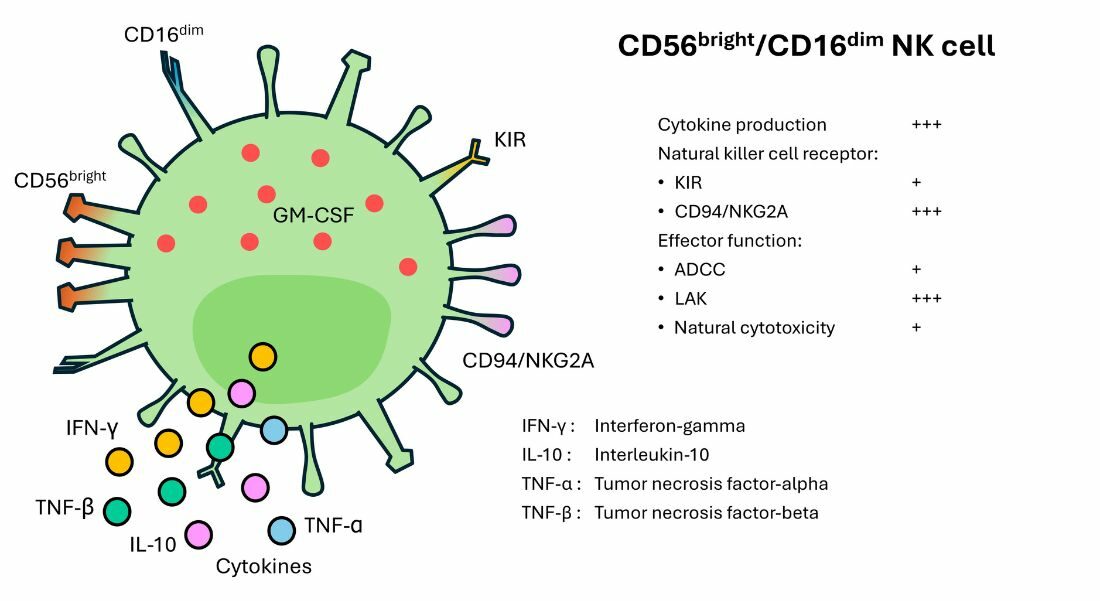
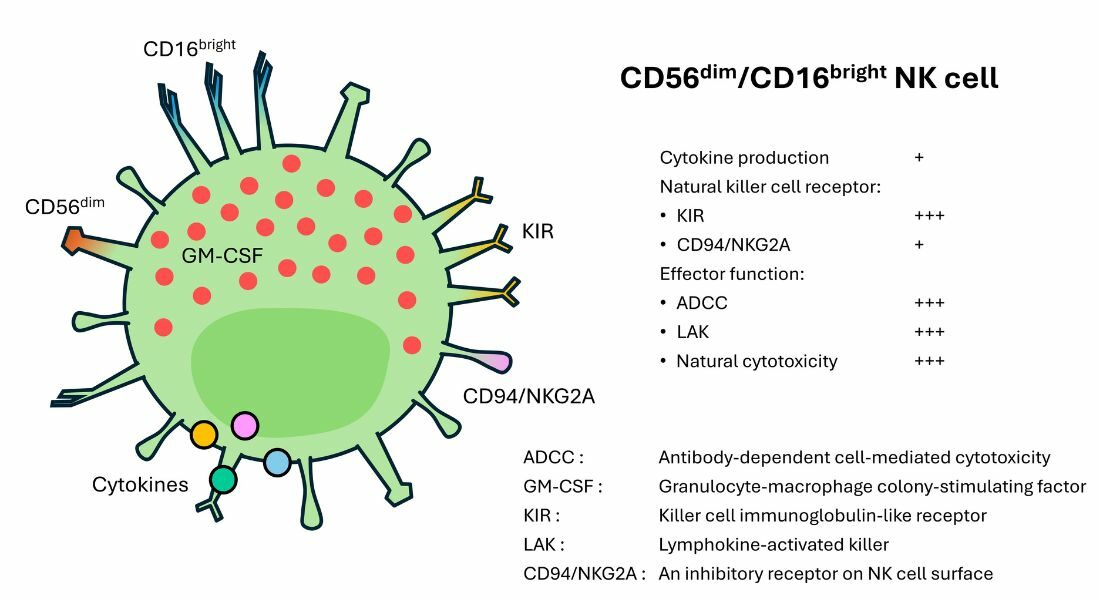
Large granular lymphocytes, or natural killer (NK) cells, are a type of white blood cell characterized by the presence of large granules containing proteins in their cytoplasm. They make up about 5 to 20 percent of the total white blood cell count in the circulation. NK cells play a crucial role in the immune system’s innate immune response, which can immediately and rapidly destroy infected or cancerous cells without prior sensitization, unlike other immune cells. They are capable of distinguishing between abnormal and normal cells through the action of receptors on their cell surface. The main receptor that distinguishes normal cells from abnormal cells is the Major Histocompatibility Complex (MHC) class I molecule, which is absent or reduced on abnormal cells. Therefore, NK cells do not attack normal cells but only target abnormal cells. Research has shown that a decreased natural cytotoxicity of NK cells is significantly associated with an increased risk of cancer development.
Natural killer (NK) cells found in the body can be divided into 2 subgroups based on the expression of molecules on their cell surface, known as cluster of differentiation (CD): CD56 and CD16. NK cells with low expression of CD56 (CD56dim) and CD16 high (CD16bright) สามารถพบได้ราว 90% ของเซลล์เพชฌฆาตทั้งหมด ในขณะที่ เซลล์เพชฌฆาตที่มีการแสดงออกของ CD56 สูง (CD56bright) and CD16 low (CD16dim) can only be found in about 10% of all natural killer cells. Although both types of natural killer cells play an important role in eliminating abnormal cells, their abilities differ. For example, CD56dim/CD16bright natural killer cells primarily function in eliminating abnormal cells through the Natural cytotoxicity mechanism, while CD56bright/CD16dim natural killer cells primarily function in producing and releasing cytokines, which are a group of proteins that signal between cells to call other immune cells to help eliminate abnormal cells, such as Interferon-γ (IFN-γ) and Tumor necrosis factor-α (TNF-α).
Testing and measuring the efficacy of white blood cells at the Wincell Research laboratory is considered equivalent to the gold standard method. 51Cr release assay, which assesses the ability of NK cells (CD56+) to destroy cancer cells.dim ) Directly, it refers to the Calcein-AM cytotoxicity assay method using a Fluorometer, which is a developed method to avoid the use of radioactive substances, using the same principle as the method. 51Cr release assay but replacing the use of radioactive substances with a light-emitting substance (Calcein-AM), which is a green fluorescent dye with lipid-soluble properties that allow it to penetrate cell membranes well and will be released from cells in case of cell damage, similar to 51Cr After that, we measure the amount of the fluorescent substance and calculate it as a value. NK activity This method is widely accepted and highly accurate, as well as safe for operators.
Natural cytotoxic activity processing
Measuring the efficacy of natural killer (NK) cells
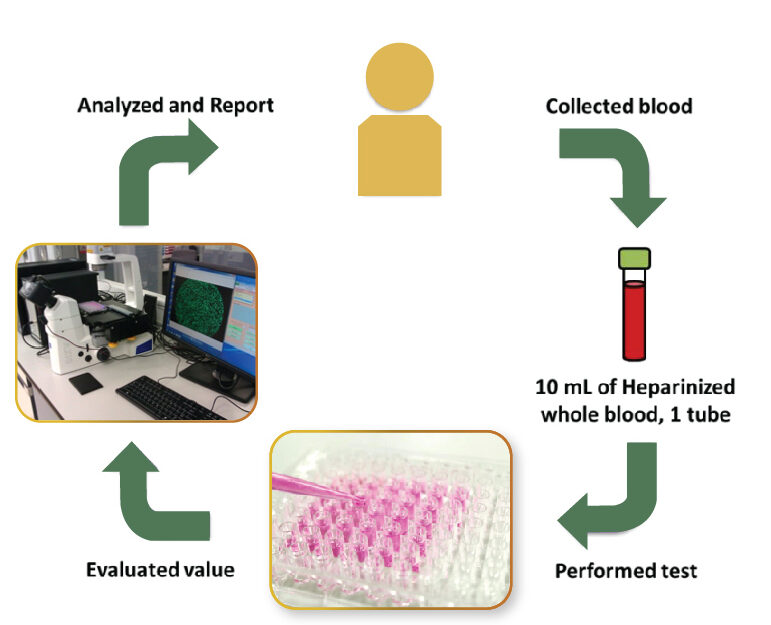
Natural cytotoxic activity (NK Activity testing)
Testing the efficacy of natural killer (NK) cells
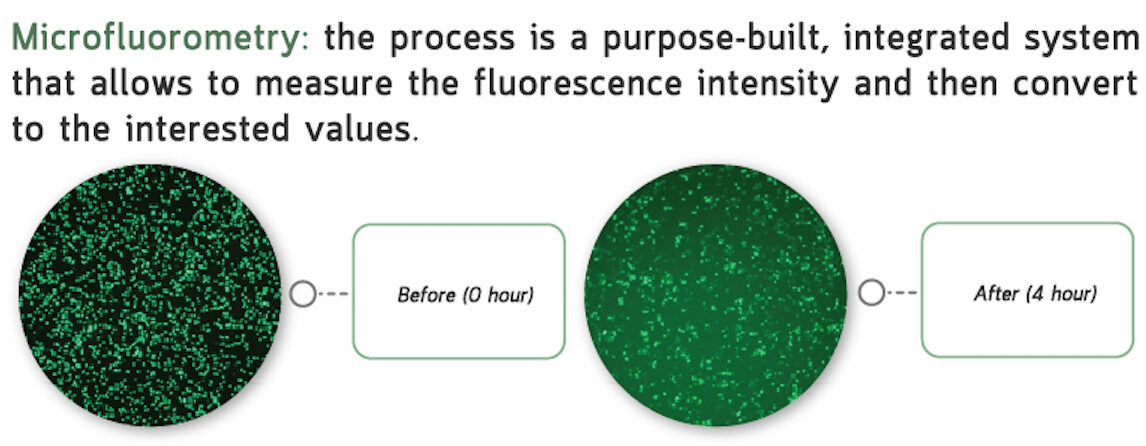
Natural Killer Cell (NK Cell) is a type of white blood cell in the body that has the ability to destroy cancer cells. It accounts for only 1% of white blood cells in our body and is the only cell that does not have antigen-specific receptors. It has the ability to recognize and target to eliminate cancer cells, pathogens, and various viruses, which are foreign substances that enter our body, quickly and efficiently. Its unique and outstanding feature compared to regular white blood cells is its superior ability to kill cancer cells, almost 100 times more effectively.
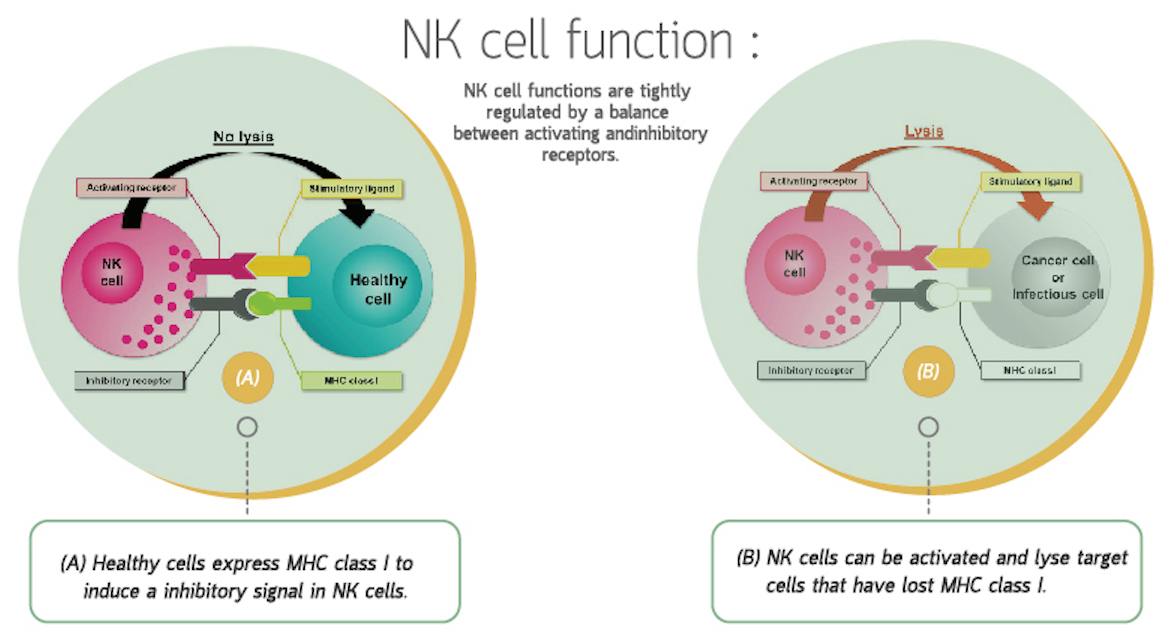
Analysis NK Cell Count ( CD3-/CD16+/CD56+ )
Counting the number of Natural Killer (NK) cells in the bloodstream helps us understand the risk of developing cancer or infections. It also indicates whether cancer patients are sufficiently prepared and strong enough to undergo treatment such as radiation therapy. Individuals with low levels of NK cells are at a higher risk of developing cancer or infections because NK cells are the first line of defense that detects and destroys cancer cells, viruses, and various pathogens through their unique mechanism. This prevents cancer cells or foreign cells from multiplying uncontrollably. Although counting NK cells is an indicator of the risk of cancer and infection, measuring the function of NK cells (NK Cell Activity) is also an important indicator that should be evaluated alongside the count to assess both the number and the ability of NK cells in each individual.
What do NK Cells in the blood say?
Analyzing the quantity of NK cells in the bloodstream can help determine if you are at risk of cancer or not. Or help decide if the patient is strong enough to be treated with radiation therapy or not? etc.
Patients with NK cell deficiency or low NK cell count are at significantly higher risk of developing cancer. This is because NK cells are the first line of defense in detecting and killing cancer cells before they multiply uncontrollably.
Who is suitable for testing NK cell count and NK activity?
Individuals at risk of developing cancer
This includes risky lifestyle behaviors such as alcohol consumption, smoking, stress, inadequate rest, excessive weight, or a family history of cancer.
